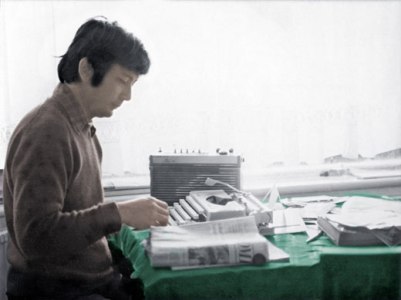The year-end trans-regional meetings of the G-20 in Nice, the APEC in Honolulu and the East Asian Summit in Bali serve to underscore the implications of the “stall speed” economies in North America and Europe to all other economies, businesses and governments throughout Asia, Latin America and Africa.
In the globally interconnected financial system, there are now more sober assessments about the economic trajectories of China, India, South Korea, Brazil, South Africa and other emerging markets. Political crises in the Middle East and civic unrest in Russia have grave implications over the viability of the euro and energy supplies from Europe to Central Asia.
The key question is: How will the global security environment impact the future of market access and economic stability within Europe, the Middle East, Central Asia, China, Japan, South Korea and other economies in Latin America and Africa?
How will debates on retrenching the US defense budget over the next 10 years affect strategic assurances to the economies in mature as well as in emerging markets? Which power or combination of military powers can provide the all important security assurances that are vital to underpin economic recovery, deliver political stability and provide security assurances that markets anywhere ultimately rely on?
How will the global security environment evolve and how will regional security arrangements assure domestic market stability and predictability? The stability of debt restructuring in Europe depends on the security balance reached between the United States, NATO and Russia.
In East Asia, the terms and conditions of regional security depend on America’s commitment to the global commons and on China’s tacit acceptance of the preponderance of the US Navy for at least another 10 years. In Latin America and Africa, the American military presence helps assure regional economic and trade groupings, which offer timely financing to ensure sustainability in the war against drug and criminal gangs threatening nations’ social and cultural fabric.
The fulcrum of political-military “balance of power” and the evolving “power of balance” incorporating economic, financial, trade, investment and energy interaction traversing Europe, Central and the Middle East, Asia and Latin America will have to be factored in the overall rebalancing process.
As Russia, China and India develop greater military capabilities, can their desire to be preeminent in their respective “core areas of national interest” (Russia in Eastern Europe, China and India in Asia) be accommodated by American strategists increasingly aware of the need to share some degree of “strategic space” with Russia, China and India?
When the United States launched the 2008 Comprehensive Cyber Defense Capability, the stated goal was to ensure that US cyber security integrated federal, state government and private sector capabilities at all levels. It implied that US cyber defense covers military, business and finance sectors that serve to advance and protect the national security interest of the United States.
The lessons learned from cases of Russian and Chinese hacking into American systems in business and economic competitiveness have not been lost by influential business and political leaders.
More than ever, strategic linear planning must increasingly mesh with coordinated cyber capabilities. The subtle combination of “soft”, “smart” and “hard” powers has captured the imagination of leadership groups in government, in private business and in the military. Through this combination the US government and businesses can best connect, cooperate as well as compete across the world.
Increasingly, there is an urgent need to prepare more skilled and better-educated military officers able to interface not only with the planning of “military battles” over physical space, but also in areas of the “non-military battles” of ideas, of knowledge and of scientific skills, which are increasingly prominent in determining a nation’s ability to thrive in a “24/7” globalized world. Research in science and technology must continuously be prioritized to maintain America’s competitiveness against emerging market ascendancy.
In the US, Russia, China, France and the United Kingdom, the curricula of “network centric warfare” emphasizes the need to interact and interface continuously to a broad community of military units, business schools and academia. That is the essence of “total defense” in applying information technology and the power of the Internet.
At the recent Bali meeting of higher military educational institutions from ASEAN and neighboring nations, there was common understanding that ASEAN countries should adopt a comprehensive vision integrating the global, the regional, the national, the provincial and the local so that “access to” and “claims over” strategic resources in their respective countries and in internationally disputed areas can be resolved through mediation and peaceful negotiation. “Sovereign space” between and among the 10 ASEAN countries must be respected among all defense officials.
ASEAN leaders in government, business and the defense-security services have vital roles in preparing the next generation of leadership to be able identify future areas of long-term collaboration in government, businesses and defense throughout East Asia. Likewise, foreign, home, trade and finance ministries will have to hone their knowledge and personal instincts to enhance leadership skills combining political, economic and military “situational awareness” with greater degrees of “technical competence”.
The combined but subtle applications of soft, smart and hard powers must become the overall learning processes in all ASEAN countries: Vietnam, Cambodia, Laos, Myanmar, Indonesia, Malaysia, Thailand, Singapore, the Philippines and Brunei Darussalam. This pool of human resources in the application of brain-warfare is ASEAN’s commitment to be counted in the East Asia rebalancing process.
Current and future generations of civilian, business and military officials in ASEAN, both at the national and local levels, must assume shared responsibility to secure the ASEAN Economic Community. Support from capable civilian, business and military leaders is crucial to the transformation of ASEAN into a credible entity within Southeast Asia and the Asia-Pacific region as well as within the over-all global rebalancing act in the years to come.
